This post may contain affiliate links where we earn from qualifying purchases. As an amazon associate, we earn from qualifying purchases. Find out more in our disclosure.
One of the biggest questions that people ask me about our gap year travels is “What do your kids do for school?”
While we were traveling, we had 3 school aged kids (11, 9, 6 ) a preschooler and a baby, so education is a pretty major part of our lives, regardless of where we go.

How to Choose the Best World School Curriculum for your Kids
So I’m here to show you what have been the best resources we’ve used that have really helped our kids education flourish while we’ve been traveling the world. Most of these are compact, portable, and packed with information, so that the things that you do choose to take, will give your kids a great education.
Now, before we totally jump into the exact curriculum that we use, I want to tell you a bit about how we approach things.
Our educational approach:
We take a fairly classical approach to our kids education. Our focus in on reading, writing and math, with other subjects supplementing that. The reasoning behind this is that if they spend the bulk of their time working to get a really solid foundation in the basics, other subjects and higher level thinking come a lot easier later on. When we started our full time travels, our kids were all in elementary school, so naturally as they get older we will have them branch out more and more with what they learn.
However, we’ve now been back for a year and are continuing to homeschool our kids. So while we’re not on thr road right this minute, I know exactly what I’d take for Middle School as well (this year, our kids are going to be in grades 7, 5, 2, K, and preschool).
Homeschool vs Worldschool – what’s the difference??
When we started traveling full time we knew that we would have to adjust our school schedule and requirements quite a bit. We had already been homeschooling for 3 years when we left to travel the world so we had a pretty well established homeschool routine. However, to do everything that we would do in a normal homeschool environment (or that the kids would do in a traditional school), just isn’t practical or necessary.
We wanted the kids to still keep progressing with their foundational skills, but travel is one of the very best ways to learn, so we wanted our travels to play a vital role in our kids education as well. What this means for us is that mornings are spent at “home” doing reading, writing and maths, and that we would explore in the afternoons.
Instead of sitting down and teaching a geography lesson, our kids would help us with our travel plans and we were constantly discussing places we wanted to go, and how we could get there. They’ve become pretty great at reading maps (a MUST when you’re always somewhere new) and know how to navigate different types of transportation like pros.
Instead of teaching history, we visit museums, historical sites, nature areas, and visit local markets and shops to get a good feel for what life is like where we are. We also do our best to connect with the locals so that we can have a deeper understanding of what their culture is like and the common threads among us all.
Curriculum To Take On The Road for Travel
Math Curriculum for World School –
We are firm believers in a traditional approach to math that we grew up with (as opposed to an investigational approach).
Basics
All of our kids start out their school day with flashcard practice. The younger kids are working on their memorization and the older kids are working on their speed. Occasionally, we mix things up with a game of 24 which requires them to apply all their math facts in problem solving form (seriously, it’s the best math game we’ve ever found and I think every family needs a copy).
Individual Instruction
After finishing up their math facts practice, our kids all start on their level of math work. The best curriculum that we’ve found is Singapore Primary mathematics. Not only is it very thorough and engaging, but the books are SMALL so they’re easy to take on the road. Each level is split up into an A and a B book, with both a textbook and a workbook. This makes it so much easier since you only have to carry half the weight (assuming your trip only covers half the school year). This goes up to level 6 (grade 6). For a few years, we bought the teacher editions as well, but I don’t think they’re very necessary and we rarely used them.
After our oldest passed out of the Singapore Primary Mathematics, we were faced with a really difficult decision of what to do next. He needed a solid pre-algebra curriculum and the logical route would have been to transition into something like Beast Academy or Khan Academy.
Over and over again, we kept feeling like Saxon was the best route for him. The bad part is that it’s kind of like hauling around a massive dictionary (the main text is 900+ pages and there are two other smaller books as well). This is essentially a travelers nightmare but we agreed with our son that if he used this curriculum (which is so fantastic), he couldn’t complain about the size…and he never has!
Writing curriculum for World School –
Writing is an area where we feel like we have the most amount of flexibility. The primary core of our writing is travel journaling. Before we left to travel, we bought all of our kids a high quality hard covered journal to document their experiences. In here, they write about the things that they love, hate, and that totally blow their minds. While it is a great place for them to practice all of their writing, the thing I love the most about it is how it really helps them process what they are experiencing. This isn’t the exact journal we have, but it’s similar.
We do travel journals 2-3 days a week and the other 2-3 days, we focus on the mechanics, structure, and flow of their writing.
IEW’s Student Writing Intensive – this is what our older kids use for their writing. It’s a series of DVD’s with printed lessons and assignments that really has helped to improve both of their writing skills. I love it because all we need is a DVD player and a few copies of the worksheets, so it takes up almost NO SPACE!
The Good and The Beautiful – This is what we use with our younger kids and I love the classical approach. It’s an all inclusive language arts curriculum, and I really love the high values it teaches and the step by step nature that it uses in its teaching. If you’re taking it on the road, my favorite part is that it’s available as a PDF so you don’t have to take the entire workbook but can just save the file and then print off the pages that need to have writing done on them (though you really should have one of their hard printed copies – they’re so beautifully done).
Handwriting Without Tears – So far, this has been the best handwriting program that I have found and it’s especially helpful for my kids who struggle with their fine motor skills. It takes a very logical approach to handwriting (not just learn A, B, C first, but rather learning writing by similar shaped letters). It doesn’t offer a ton of practice, so I always have my kids do some copywork after to practice the letters they are working on. (We do handwriting daily until our kids have mastered cursive – about age 8)
Like this post? Pin It for later!

Reading Curriculum for World School –
My favorite reading resource and one that I believe all parents should have is Teach Your Child To Read In 100 Easy Lessons. I’ve taught kids to read both with and without this book and my kids who learned with this book and its method have become better readers much faster than those who didn’t. It’s not the most exciting (getting through lessons 10-25 is kind of a chore), but it’s incredibly effective and if you stick to it, it will work wonders. It’s big and clunky at almost 400 pages, but since it’s so good, I actually cut the book down the spine for our travels, so I only took the half of the lessons we needed. A bit crazy, but so, so worth it!
The Good and The Beautiful Book Lists – If you’re tired of your kids just reading JUNK, then this is for you. These book lists by The Good and The Beautiful suggest books for your kids (based on level) that teach high values, and don’t have inappropriate things in them (which is so hard to find). Before we hit the road, we download as many as we can on the kids kindles, and then buy the rest. I try and have one set of books for our older kids to both read, and another set of books for the younger kids, so we don’t have to haul as many. We also tend to gravitate towards classical literature for our kids with schooling so we don’t have to worry as much about the content. In the end, a lot of the books we want the kids to read, aren’t available as an ebook, so we end up taking about half digital and half REAL books. (Our kids LOVE a real paper book so they don’t complain about the weight in their bag).
The Good and The Beautiful also has reading primers which we LOVE. This is primarily what our 1st grader uses for his reading, with a few other small paperback books thrown in for interest (Frog and Toad, Amelia Bedelia, Billy and Blaze, etc)
We also have a rule that if our kids want to read for pleasure (our oldest are voracious readers), they can only read ebooks…it’s a space thing, and our kids LOVE to read so no one fights us on that one. Our kids are always on the lookout for small lending libraries or used bookstores where they can get a book just while we’re there and then leave it behind when it’s time to head to our next destination. Also, if you don’t have a kindle for your kids, it’s pretty much priceless on the road. Link up with your local library back home and download the Overdrive app, and you can download ebooks from your local library that you can read all over the world. Also, the Kindle Fire allows you to download videos and other apps so it’s a lifesaver on longer travel days (and it’s so cheap that you don’t have to be constantly worried about letting your kids use it!)
Science for World School –
When we are on the road and are truly Worldschooling, we don’t do SCIENCE. GASP! It’s true…and the shocking part is that I used to be a science teacher. The reasoning for this is that most science activities require a lot of materials which just isn’t an option on the road. So, when we are on the road, nature is our science teacher. We make observations, form collections, study behavior, and ask lots and lots and lots of questions. If you’re looking for some good books to get you started on doing science this way, I highly recommend reading How To Be an Explorer of the World.
Now that our oldest is going into 7th grade, we’ve really started to dive into science more. We’ve found some fantastic resources on Teachers Pay Teachers that offer a lot of digital science lessons and even entire years worth of lesson plans. If we were to hit the road right now, we’d primarily use those and then find print shops along the way to print out a few pages here and there.
History for World School –
Our biggest history lessons while traveling are about the places that we are visiting. We typically stay in homes or apartments so we can be living more like the locals, we shop at the local markets, and we are always trying to make new friends so they can tell us more about where they live (that is when we can speak the same language!)
For every country that we visit, our kids draw a map in their travel journal of the country, as well as write facts that they have researched about where we are (yes, there is some great information about a country in a travel guidebook – one of our top resources!) I’ll also google “geography bee questions about _____(wherever we are visiting)” and we learn all sorts of amazing facts doing this as well! Like I mentioned above, we also involve our kids heavily in trip planning and navigation during our travels. So far, that’s been the best geography lesson they could ever have!
For more continuity, we absolutely love Susan Wise Bauers Story of The World, even though it doesn’t directly tie into our travels most of the time. . This is the history of the world in story format and all of our kids LOVE IT! We often use these as bedtime stories and then stay up with the older kids to discuss what we were reading about. There are 4 volumes and they’re all available on Kindle, so we take them everywhere with us! Go here to get volume 1, 2, 3, and 4.
That’s about it. I’m sure I’m leaving something out, so please let me know what questions you have and I’ll try and explain further.
Like this post? Pin it for later!

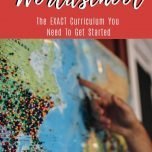
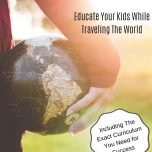
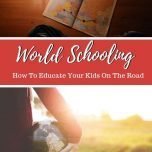
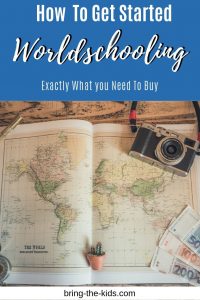

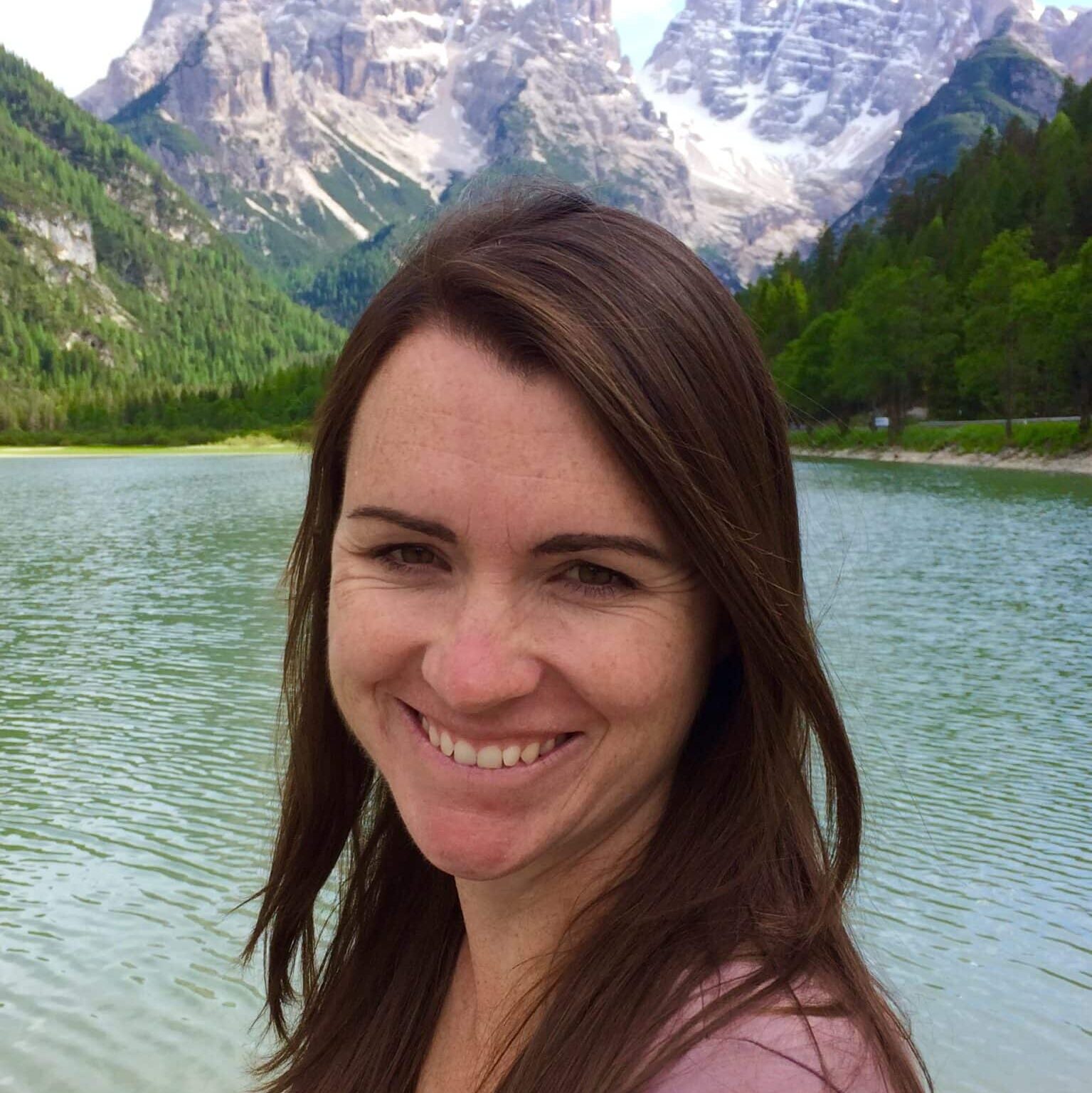
This was really nice post and very helpful. Thanks for sharing
How do you navigate homeschool laws in the countries you are in?
Tara- We weren’t residents of any of the countries that we stayed in, so we didn’t have to worry about homeschool laws. Technically, because we were on a visitors visa, we don’t have to comply with any of those laws. If we were living these as residents, we would have a completely different type of visa and would have to comply with the local education requirements. Most places we stayed in for around a month, so it wasn’t anything to worry about. When we lived in the Middle East, we were residents so we just had to go through the local jurisdiction to verify that we were educating our kids on our own.